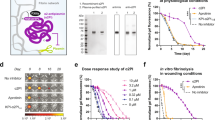The mechanism by which intravesical recombinant tissue plasminogen activator (rTPA) prevents tumor cell adherence to injured bladder surfaces, and the optimal parameters for the in vivo use of rTPA for adherence prevention, were evaluated. Intravesical rTPA decreased tumor cell adherence to sites of urothelial injury as a direct function of drug concentration in the intravesical fluid. Recombinant TPA concentrations of 1 mg/ml and 0.1 mg/ml significantly decreased tumor cell adherence relative to the control group. The efficacy of rTPA in removing adherent cells was time-dependent with maximal activity occurring at 15 min or later following intravesical administration. Intravesical rTPA effectively reduced the size of the tumor inoculum when administered either concomitant with, or subsequent to, tumor cell exposure. The relative efficacy of these two approaches was dependent upon the presence of serum in the intravesical fluid. Administration of rTPA concomitant with tumor cell exposure proved more effective in the absence of serum, while postadherence administration was more effective in the presence of 10% fetal calf serum. The addition of exogenous plasminogen to the rTPA solution did not increase anti-adherence activity relative to rTPA alone. However, blockade of endogenous plasminogen conversion with systemically administered epsilon-amino-caproic acid reversed the anti-adherence activity of exogenous rTPA. In vitro experiments evaluating cellular adherence to fibrin substrate confirmed that rTPA's anti-adherence activity was dependent on the presence of plasminogen. Exogenous rTPA administered immediately following tumor cell adherence decreased tumor cell implantation in animals receiving low to moderate tumor inoculums. These data suggest that rTPA prevents cellular adherence as a result of plasminogen activation and subsequent fibrinolysis. Intravesical rTPA administered in sufficient concentration for relatively short periods of time effectively reduces the adherent tumor inoculum and alters implantation as an inverse function of the tumor inoculum. This approach represents a novel strategy which may prove applicable for the prevention of implantation-mediated tumor recurrence at sites of surgical trauma.
Similar content being viewed by others
References
Albarran J and Imbert L, 1903, Les Tumeurs du Rein. Paris: Masson et cie, pp. 452–459.
McDonald DF and Thorson T, 1956, Clinical implications of transplantability of induced bladder tumors to intact transitional epithelium in dogs. Journal of Urology, 75, 960–964.
See WA and Chapman WH, 1987, Tumor cell implantation following neodymium-YAG bladder injury: a comparison to electrocautery injury. Journal of Urology, 137, 1266.
See WA, Miller JS and Williams RD, 1989, Pathophysiology of transitional tumor cell adherence to sites of urothelial injury: mechanisms mediating in travesical recurrence due to implantation. Cancer Research, 49, 5414–5418.
Soloway MS and Masters S, 1980, Urothelial susceptibility to tumor cell implantation: influence of cauterization. Cancer, 46, 1158–1163.
Laiho M and Keski-Oja J, 1989, Growth factors in the regulation of pericellular proteolysis: a review. Cancer Research 49, 2533–2553.
Pennica D, Holmes WE, Kohr WJ, Harkins RN, Vehar GA, Ward CA, Bennett WF, Yelverton C, Heynecker HL, Goeddel DV and Collen, D, 1983, Cloning and expression of human tissue-type plasminogen activator cDNA in E. coli. Nature, 301, 214–221.
Van de Werf F, Ludbrook PA, Bergmann SR, Tiefenbrunn AJ, Fox AAK, de Geest H, Verstraete M, Collen D, Sobel BE, 1984, Coronary thromboly sis with tissue type plasminogen activator in patients with evolving myocardial infarction. New England Journal of Medicine, 310, 609–613.
Wahlstrom T, Chapman WH and Hellstrom KE, 1976, Long term transplantability and morphologic stability of three experimentally induced urinary bladder carcinomas in rats. Cancer Research, 36, 4652–4656.
See WA and Chapman PH, 1987, Heparin prevention of tumor cell adherence and implantation on injured urothelial surfaces. Journal of Urology, 138, 182–186.
Deutsch DG and Mertz ET, 1970, Plasminogen: purification from human plasma by affinity chromatogaphy. Science, 170, 1095–1096.
Unkeless JC, Tobia A, Ossoski L, Quigley JP, Rifken DB and Reich E, 1973, An enzymatic function associated with transformation of fibroblasts by oncogenic viruses. I. Chick embryo fibroblasts cultures transformed by avian tumor virusesJournal of Experimental Medicine, 137, 85–126.
Mossman T, 1983, Rapid colorometric assay for cellular growth and survival: application to proliferation and cytotoxicity assays. Journal of Immunological Methods, 65, 55–63.
Carlon BY, Clark AS and Littlefield BA, 1987, A highly sensitive chromogenic microtiter plate assay for plasminogen activators which quantitatively dis criminates between the urokinase and tissue-type activators. Biochemical and Biophysical Research Communications, 142, 147–154.
Silverberg E and Lubera JA, 1989, Cancer statistics. CA, 39, 3–20.
Catalona WJ, Dresner SM and Haaff EO. Management of superficial bladder cancer. In: Skinner DG and Lieskorsky G, eds. Diagnosis and Management of Genitourinary Cancer. Philadelphia: WB Saunders, 1988, pp. 281–294.
Loening S, Narayana A, Yoder L, Slymen D, Weinstein S, Penick G and Culp D, 1980, Factors influencing the recurrence rate of bladder cancer. Journal of Urology, 123, 29–31.
Pyrah LN, Raper FP and Thomas GJ, 1964, Report on follow-up of papillary tumors of the bladder. British Journal of Urology, 36, 14–25.
Korninger C and Collen D, 1981, Studies on the specific fibrinolytic effect of human extrinsic (tissuetype) plasminogen activator in human blood and various animal species in vitro. Thrombosis and Haemostasis, 46, 561.
Author information
Authors and Affiliations
Rights and permissions
About this article
Cite this article
See, W.A. Intravesical recombinant tissue plasminogen activator for the prevention of implantation-mediated bladder tumor recurrence. Clin Exp Metast 10, 99–109 (1992). https://doi.org/10.1007/BF00114586
Received:
Accepted:
Issue Date:
DOI: https://doi.org/10.1007/BF00114586




